
Estimated reading time: 9 minutes
LVPO or Low Power Variable Optics are an excellent compromise between the speed of a red dot and the magnification of a scope. LVPO scopes offer nearly as fast of target acquisition as that of a red dot at close to medium distances and provide precision at much longer distances like a high magnification riflescope. An LVPO just might be the ideal all-around optic for an AR15-style rifle.
Table of contents
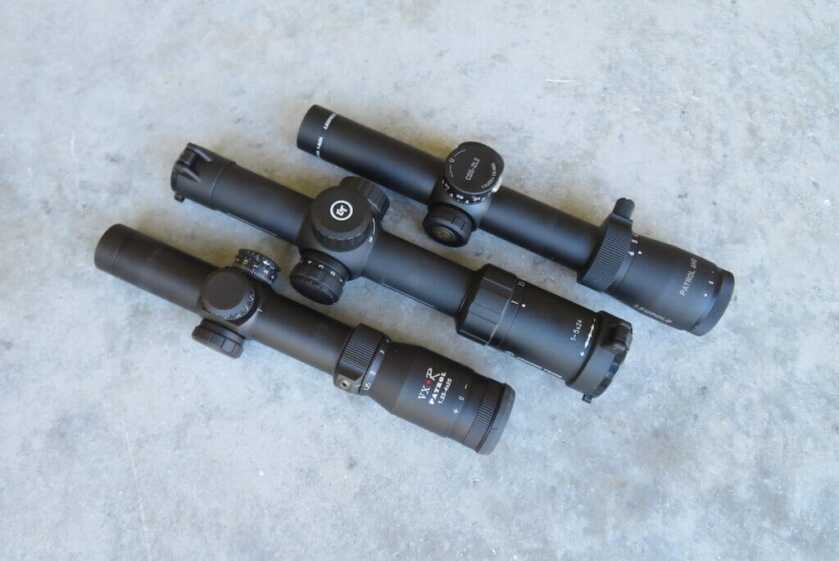
What is an LPVO?
The Low Power in LVPO is a clue. These scopes offer low magnification. On the low end, at a true 1x power, there is no magnification. The magnification power range for an LPVO ranges from 4x, 6x, or 8x sometimes 10x, depending on the scope manufacturer. The real sweet spot, in my opinion, is an LVPO with a 1-6x power range. That power range is comparatively low compared to scopes used for hunting and long-range shooting, but it is a compromise in a good way. It’s an ideal truck gun set up capable of fast, close-range shooting and going the distance out to mid-range targets. An LVPO is perhaps the most versatile scope you can mount to an AR.
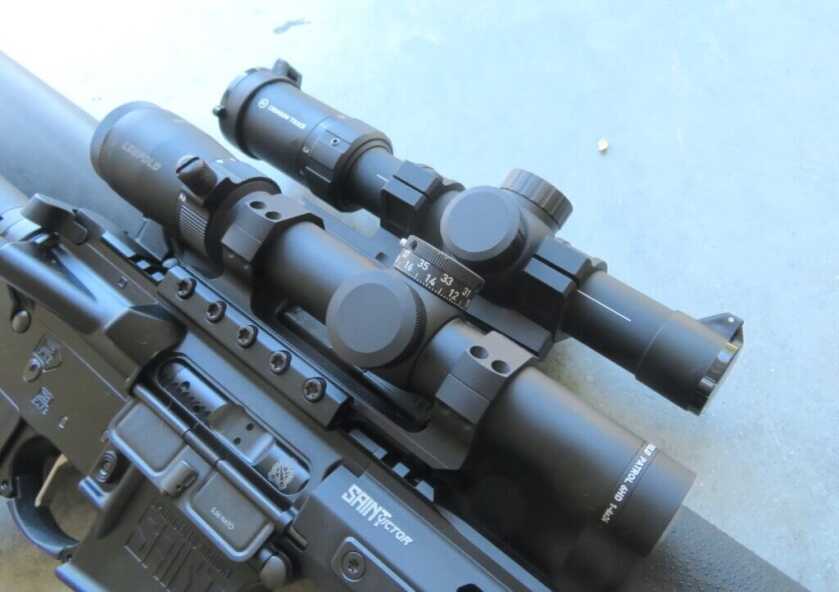
An LPVO mounted on an AR15 is suited for defense situations and for hitting targets out to 400 yards.
The LPVO Is Born
LPVOs have been used on hunting rifles since the 1920’s. Low-power scopes are used for hunting dangerous game. A low-power optic ensures fast target acquisition and that’s important especially if a cape buffalo is determined to stomp you into pudding. In heavily wooded areas, the low power and variable magnification is a near-perfect hunting setup. With the optic set on 1x, I have jumped bucks easily making fast shots. When I’m in a stand at the edge of an open field, the variable power is enough to spot and count the tines and then decide whether or not to make the shot or pass. For me an LVPO has become my go-to scope.
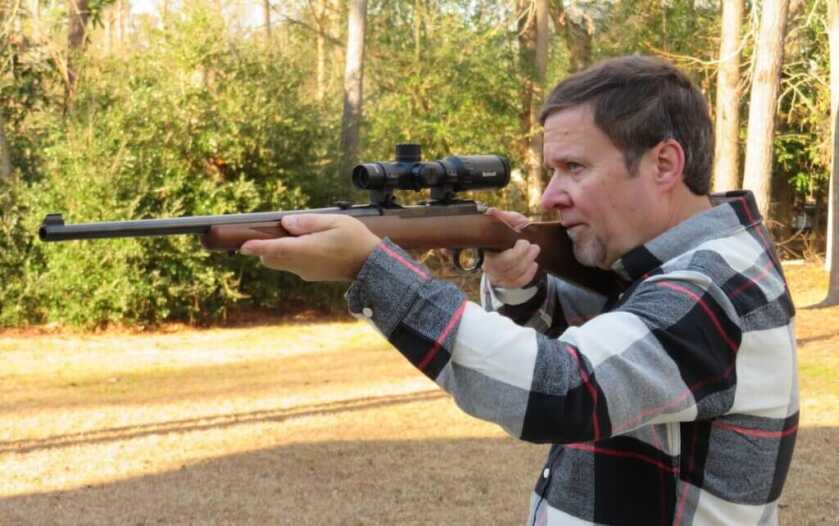
Military Optics
The military application arose in the early 1990s with Special Forces teams who needed a scope that offered more precise aiming past 100 yards yet allowed the operator to use the optic at close range. Back then Special Forces operators had either low-power fixed scopes or variable, high-power scopes. Neither of which was well suited for the close to medium-range distances they encountered. The LVPO was just the ticket.
READ MORE: Introducing the EOTECH VUDU 1-10×28 FFP LPVO
The Army has purchased LVPO scopes—they call them DVO or Direct View Optic—for M4A1 carbines enabling soldiers to engage enemy fighters out to 600 meters with good accuracy. Perhaps the Army said it best in the DVO solicitation: “Variable power magnification optics combine the capabilities of the non-magnified optic’s ability to engage close quarter targets with a fixed-magnification optic’s ability to detect, recognize, identify, and precisely engage targets at extended ranges.” That sounds just about right.
LVPO Choice Of 3-Gunners
Not only military and hunting applications, but sport shooting is a good gauge of what works and what doesn’t. 3-Gun competition jump-started LPVO development to where it is today. Back in the 1990s, the 3-Gun sport was heating up. In 3-Gun a competitor needs to be able to transition from a close target to a distant target on the fly. Time is not your friend in 3-Gun, and LVPO scopes are ideal for targets a few yards away or at extended ranges and in between. Look at 3-Gun rifles and you’ll see AR15s mounted with LPVO optics.
LVPO Features
Several optic manufacturers are building LPVO scopes with prices ranging from inexpensive to models that give you sticker shock. Features typically found on an LVPO are an illuminated, ballistic reticle, capped turrets, and an easy-to-rotate magnification ring. The reticles offer dynamic compensation in place of cranking turrets. Many reticles are calibrated to AR calibers like 5.56/.223, 300 BLK, and .308 Win. Both SFP and FFP models are available, depending on your preference. Many have big power rings that are grippy and easy to rotate while others feature an extended throw lever to rapidly increase or decrease magnification. One-piece mounts are the norm for AR-style rifles.
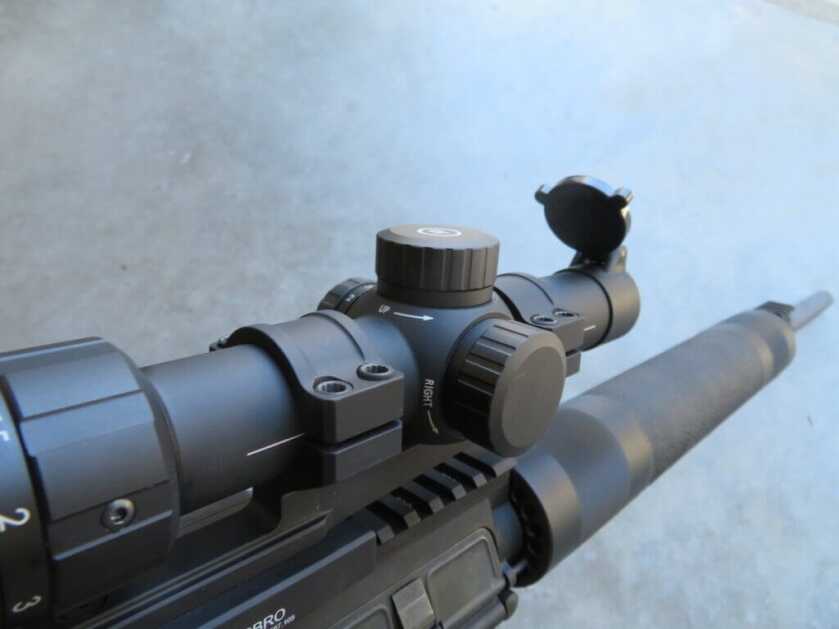
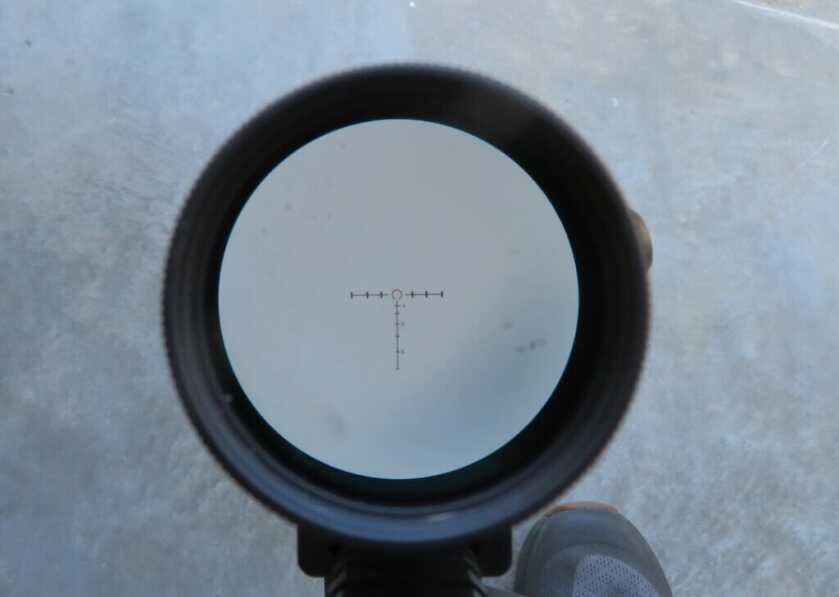
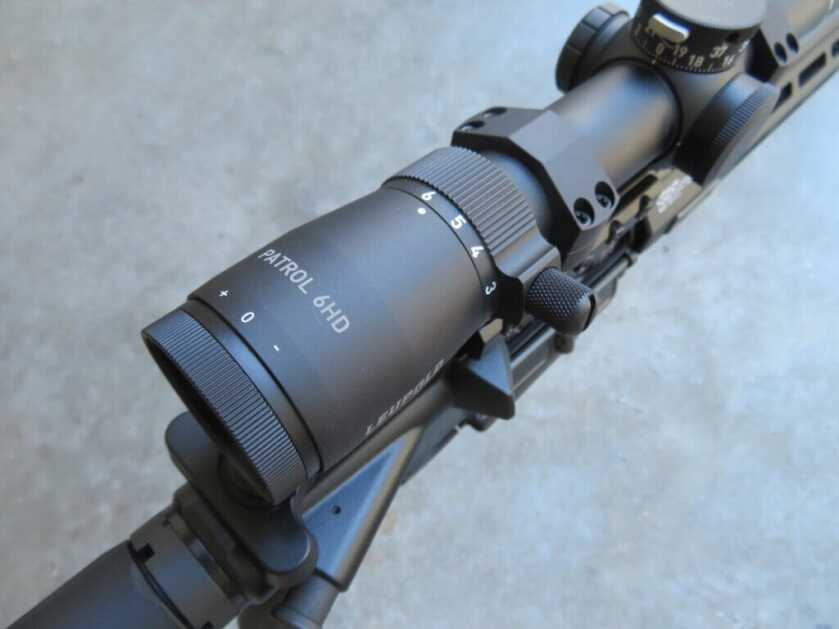
Deciding On An Optic
Here’s the conundrum: Should you get a red dot or an LVPO? Red dot optics offer excellent close to medium-range target acquisition on an AR15. Red dots are fast, and if it’s fast, close target shooting you want, then a red dot optic is the logical choice. When red dots tend to stumble and become a liability is at long-distance shots.
Depending on the MOA of your dot you can obscure your target making it difficult for a precision shot. Place a 6 MOA red dot on a prairie dog at 75 yards and you might not even see the tiny critter. Place it on a coyote at 100 yards and the dot can cover a lot of targets. High-power magnification scopes on an AR are the obvious choice for shooting long-range. Scopes offer magnification for better target identification and reticles that offer precise shot placement. At close range, however, a high magnification scope is a liability since it reduces the field of view.
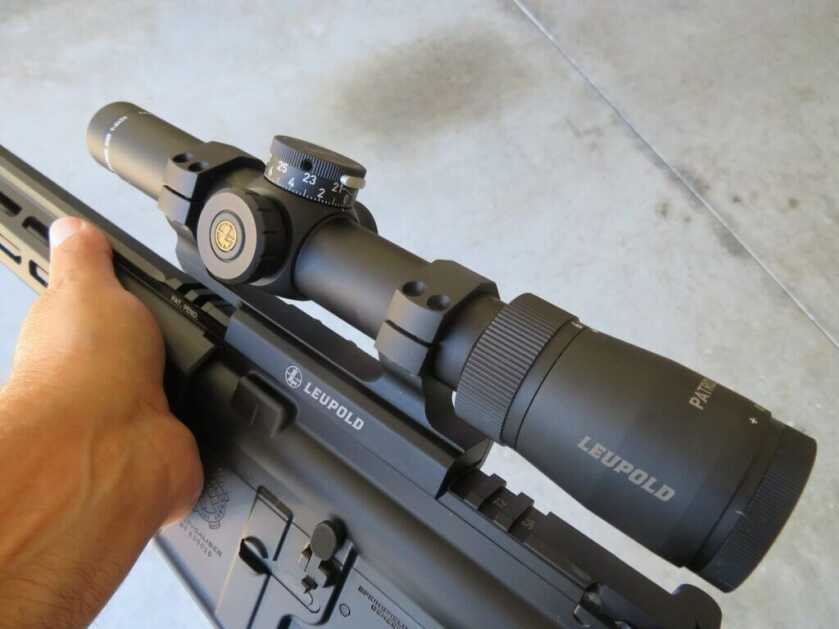
Red Dots
A red dot has a smaller footprint and is lightweight. Some instantly turn on when motion is detected, making them always ready without fumbling a power button. If you want speed at close range, then a red dot is the obvious choice. A red dot matched up with a magnifier is also an option. In this type of setup, the magnifier can be flipped away from the red dot for closer engagements and flipped back to pair it up with the red dot for targets at longer distances.
Red dots have a lot of checkmarks in the Pros column. They also have some in the Cons column. When the battery dies the reticle is gone. There is nothing to aim with. An LVPO always has a reticle. LPVO scopes come with traditional reticles and many illuminate like a red dot. Those with an illuminated reticle work the same way as a red dot, but if the battery croaks in an LPVO, the illumination goes but you still have the reticle.
Also on the Pros side with some LPVOs are ballistic calibrated reticles that allow you to instantly compensate for wind or elevation. Some red dots do have ranging and ballistic trajectory compensation, but again no battery, no reticle. There is no parallax with most red dots or holographic sights. This means the dot can be anywhere in the optic window and the shot will hit whatever the dot is placed on. Parallax can be an issue with some inexpensive LVPO scopes. Better quality LVPOs have parallax adjustment. The main drawback of an LVPO is its size and weight. It is gargantuan compared to some red dots.
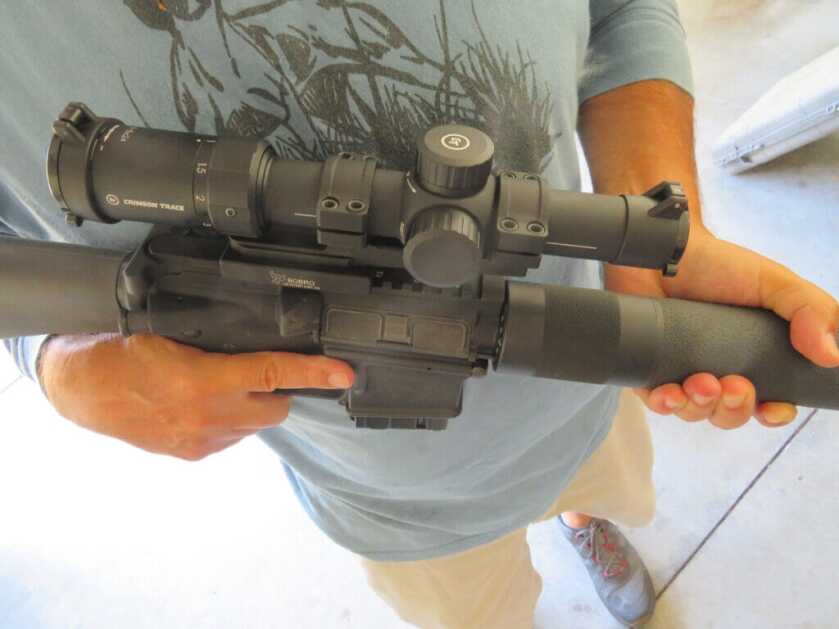
LVPO Versatility
There is no wrong choice between a red dot or LVPO, you just need to match the optic to your need. I prefer a 1-6x power LVPO with a 30mm tube and FFP reticle that illuminates at the center and offers a smorgasbord of aiming points. It is nearly as fast as a red dot, and I shoot with both my eyes open. I also like the ability to rest the rifle and increase the magnification to take a long-distance shot. That’s versatility. If you want more versatility in your optic, choose an LVPO.
*** Buy and Sell on GunsAmerica! ***


I have a LPVO scope. And I always took it with my rifle when I went hunting hogs and turkey. Sometimes I also hunt elk. And recently I find some people went hunting bear. I think it’s challenging and I want to have a try. And this is my LPVO scope. https://www.cvlife.com/products/cvlife-1-6×24-lpvo-scope-with-cantilever-mount Is it suiitable for bear hunting? Or do I have to buy another scope for bear hunting? Any scopes to recommend?
I know you mean LPVO but a few times in the article you use LVPO, including in the last sentence.
I’m a big fan of LPVO’s on AR’s, I have a few. Unless you’re predominantly shooting long distance or absolutely need the larger FOV and or light transmission of a traditional scope or you’re sure you’re never going to need to make accurate shots past 100 yards, the LPVO is a great choice. Mine are a combination of options from Vortex and Leupold and I highly recommend them.
I installed a Crimson Trace low-power optic on my CQB gun and it works like a champ though I haven’t had a chance to really put it to work,
I do like the fact that I can have quick target access without the use of a Red Dot as my eyes will not allow me to use those types of sights without ghosting which really irritates me because I thought the Red Dot with the cats meow when I first tried one!
I have three different ARs for three different purposes long-range, medium-range, and CQB
On the medium range, which is a custom-built Spikes Tactical Crusader, I use the Bushnell AR223 of which I’ve used for taking quite a few deer and hogs!
My long-range sniper gun is equipped with the ATN X-Sught HD II, which makes that AR a day-night sniper gun from hell!
So optics are always a matter of personal opinion and choice and one of the reasons why I currently sell all of my custom ARs with only flip-up sights unless the buyer wants something special! 👏🏽 👍🏼☺️
Thanks for the informative article, as you guys always rock in this area!
Scopes also allow the diopter to be adjusted so the reticle is nice and clear for people with astigmatism. Red dots are fuzzy for people with astigmatism.
Definitely my choice every single time! On my dept we shoot from point blank to about 150 yards. I’m the only guy running an LPVO on the dept. So when all the other dudes are putting rounds all over the paper, I’m still shooting nice tight groups with my 34 mm 1-8 MRAD Trijicon. A 1-6X or 1-8x is the only choice for me. Love them. And On 1 power it’s just as good as any red dot out there.
They are great but only if you religiously return the scope to the lowest power setting every time when not actively looking through it.
I’ve know a lot of hunters back when the 3X9 scopes were all the rage miss a shot because a buck stepped out at 50 yards and they tried to shoot it with the magnification set to 9X. It doesn’t work. They all started out the day with the scope set to 3X but thought they saw something so they cranked the scope up to 9X to get a good look and then forgot to turn the magnification back down to 3X when done looking.